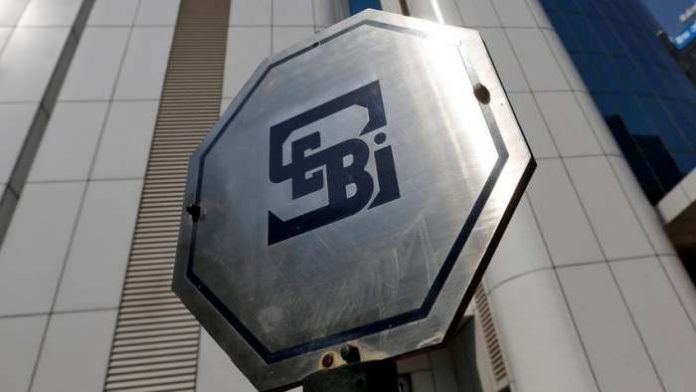This article is written by Deepanshu Agarwal who is pursuing a Certificate Course in Securities Laws, Insider Trading and SEBI Litigation from LawSikho.
Table of Contents
Introduction
As a measure to provide sufficient float in listed entity post- corporate insolvency resolution process (CIRP), the Securities & Exchange Board of India (SEBI), has on 19 August 2020, released a consultation paper titled ‘Recalibration of threshold for minimum public shareholding (MPS) norms, enhanced disclosures in corporate insolvency resolution process (CIRP) cases’. This step by the market regulator, was taken in the light of the recent case of Ruchi Soya in which the share price of the company having public shareholding of 0.97%, increased by 8,929% within 5 months of reslisting, after it was acquired by Patanjali Ayurved pursuant to the resolution plan approved under the Insolvency and Bankruptcy Code, 2016 (IBC).
This article analyzes the key recommendations highlighted in the consultation paper in light of the Ruchi Soya case. Before we delve into the recommendations, let’s first look at the Ruchi Soya case.
The case of Ruchi Soya & Need for revising MPS norms
The shares of the company ‘Ruchi Soya’ which were acquired by Patanjali Ayurved Ltd. as a part of the CIRP in December 2019, were relisted in January 2020 at Rs. 17 per share. Within a period of 5 months post relisting, its share prices hiked to INR 1,535/share on 29 June 2020, which equals itself to a sharp increase by 8,929%. This happened despite of the additional preventive surveillance actions taken by the market regulator, including reduction in price band & moving the scrip into trade for trade segment. As a result, the overall market capitalization of Ruchi Soya hiked from INR 4,350 crore to INR 45,000 crore in only 5 months. This was even higher than the market capitalization of giants like Tata Steel, Ambuja Cement, Bharti Infratel & IndusInd Bank.
Now, it becomes gripping to analyze how this has happened despite the tight regulatory watch. One of the main reasons behind this was the low level of free float. This means that very few shares were available for the public to trade for the shares of Ruchi Soya. Post-CIRP, Patanjali group holds 99.03% of shares of Ruchi Soya, which means that the shares available on the stock exchange are even less than 1%. This resulted in less supply of the shares, the demand of which became significantly high & which in turn, resulted in share prices rising exponentially. Also, it was the speculation over revival or a reverse merger of Patanjali with Ruchi Soya that lead to the high demand of its shares.
The Problem Of Low Float & Need To Revise MPS Norms
In short, it was the low float that created an artificial demand for shares of Ruchi Soya, which increased its share price and market capitalization subsequently.
SEBI has also highlighted in the consultation paper that low float bars healthy participation in trading of companies mainly because of issues related to demand and supply gap of shares. It also brings in various concerns such as failure of fair discovery of price of the scrip, need for increased surveillance measures etc. & may therefore not be a good sign for future cases. Also, the lower the market float, easier is the chance for manipulation of stock prices.
As a measure to ensure sufficient float in listed companies, the Securities Contract Regulation Rules, 1957 (SCRR) mandates MPS of 25% of the total shareholding in such companies. Howbeit, due to the elementary changes in the governance & management of listed companies in the course of CIRP, SEBI has given certain relaxations to such companies regarding the compliance with the MPS requirements. The first is Regulation 3(2) of SEBI (Substantial Acquisition of Shares and Takeovers) Regulations 2011 (Takeover Regulations) which allows a buyer (pursuant to approved resolution plan) to acquire more than 75% in a company, i.e., more than the maximum permissible non-public shareholding limit. The second is Regulation 19A of SCRR which provides that if in case the MPS falls below 10% pursuant to the implementation of resolution plan under IBC, it has to be brought to 10% within 18 months & 25% in 3 years from date of such fall. But if in case the MPS falls below 25% but is above 10%, it has to be brought to 25% within 3 years from date of such fall.
These relaxations are important as it is tedious for the companies post-CIRP to comply at once with the MPS requirements because of the reason that the investors may find it risky to invest in such companies. This is why only 6 companies have been listed post-CIRP in India.
However, due to these relaxations, it is possible that post-CIRP, the public shareholding in such companies may fall to extremely low levels (as highlighted in case of Ruchi Soya (as discussed above)). Prescribing no lower limit for MPS in post- CIRP cases may lead to situation in which the public shareholding would be too low, thus resulting in less float.
The Proposed Changes In MPS Norms
The market regulator has proposed three changes to the existing MPS norms for companies aspiring to relist post-CIRP.
- The first option seeks to reduce the time period specified under in Rule 19A of SCRR, from 18 months to 6 months, in order to attain 10% MPS from the date of the fall.
- The second option requires at least 5% MPS, for companies post-CIRP, at time of reslisting subsequent to which they would also be given 12 months to raise the MPS to 10% & then another 24 months to raise it to 25%.
- The last option provides the companies who wish to relist post-CIRP, to have at least 10% at the time of relisting which could be raised to 25% in the next 3 years from such fall.
The Proposed Changes for Lock-In Period Exception
SEBI has proposed to relax the lock-in period prescribed under the ICDR regulations, for incoming investors/promoters under the resolution plan.
Prior to this relaxation, in case of preferential issue of shares to the incoming promoter under the resolution plan, the shares allotted in excess of 20% of the total share capital were required to remain under a lock-in period of at least one year (Regulation 167(1) of SEBI (Issuer of Capital and Disclosure) Requirements 2018).
Therefore, this move taken by SEBI would allow the dilution of promoters’ shareholding which would ease it for the companies to comply with the MPS norms, unlike before where such dilution was not possible up to a period of 1 year.
Proposed Changes for Enhanced Disclosures
As per Regulation 30 of SEBI Listing Obligations And Disclosure Requirements Regulations 2015 (LODR), the disclosure of salient features of resolution plan approved by NCLT, excluding the commercial secrets, was mandatory. But the market regulator felt the need for disclosing some important aspects of the resolution plan such as shares/ convertibles to be allotted to incoming investor, source(s) of funds (if any), terms of such allotment, impact of the resolution plan on the existing shareholders etc. The underlying reason was that this kind of information could provide assistance to the public shareholders in determining the true value of shares after reslisting pursuant to implementation of the resolution plan.
Therefore, in the light of the same, SEBI proposed a standardized reporting framework pursuant to approval of resolution plan which includes all the aspects as mentioned above.
An Analysis Of The New MPS Norms
Complying with the MPS norms have always been a tedious task for companies. In the past, SEBI has even fined many companies for such non-compliance. This compliance becomes even more burdensome for the companies after CIRP because of full in market value & lack of investor’s confidence in such companies.
As already discussed above, it took only 5 months for the shares of Ruchi Soya to get increased to 8,929% post-reslisting pursuant to CIRP. Therefore, the first option seems to be crafty as it gives a period of 6 months post-relisting to increase the MPS to 10%. It is still possible that the share price rises insignificantly during that time, after which the promoters can dilute their shareholding through the lock-in period exemption, to comply with the MPS norms. Hence, it becomes inevitable to prescribe some MPS requirements from the starting of the relisting process. Moreover, a period of 6 months (in place of 18 months) may not be sufficient to comply with the MPS requirements.
Regarding the third option, a 10% MPS requirement is too tough to achieve at the time of relisting for the companies that have undergone insolvency. Moreover, an instant dilution of large amount of shares by the promoters can also lead to high volatility of shares which can result in high risk associated with it.
The second option looks more suitable from all other options. Achieving 5% MPS at the time of reslisting is easier than 10%. Moreover, it is not much burdensome for the companies achieve 10% in the next 1 year & the remaining in the next 2 years, especially when combined with the lock-in period exemption.
An issue with the 5% threshold is that it is not sufficient enough to resolve the problem of low float. Nevertheless, the positive side being that this lower threshold of 5% will encourage the companies to keep listed & any higher threshold may impel for total delisting.
Conclusion
The proposed MPS norms were much needed in the light of the Ruchi Soya case. Though SEBI has prescribed three ways to resolve the issue of low float, the second option seems most viable. Therefore, the recommendations are useful as they adjust between the revival of companies & the rights of shareholders as well as promote effective price discovery & market integrity.
Students of Lawsikho courses regularly produce writing assignments and work on practical exercises as a part of their coursework and develop themselves in real-life practical skill.
LawSikho has created a telegram group for exchanging legal knowledge, referrals and various opportunities. You can click on this link and join:












